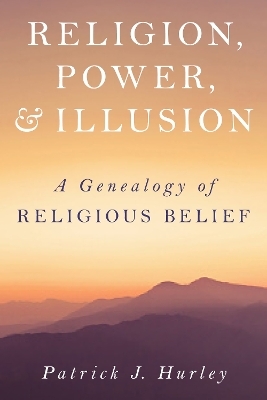
Religion, Power, and Illusion
A Genealogy of Religious Belief
Seiten
2022
Prometheus Books (Verlag)
978-1-63388-840-1 (ISBN)
Prometheus Books (Verlag)
978-1-63388-840-1 (ISBN)
According to anthropologists, religion arose in the Neolithic period, a time that began 12 thousand years ago when people abandoned the hunter-gatherer lifestyle and started settling down in communities. By the time of the ancient Egyptians, religion had reached a significant level of development. The spirits of the seeds and the weather had evolved into gods. In the end, the gods numbered more than a thousand; every god required a temple, and every temple needed a priest, or several of them. For the Christian god to reach its final form took an additional three hundred years. It was accomplished through the work of dozens of bishops who wrestled with the problem of how a god consisting of three persons could really be one entity.
Religion, Power & Illusion: A Genealogy of Religious Belief puts forth the idea that modern concepts of God are inextricably tied to the generations of mortal priests that shaped biblical and religious ideas.
Religious orthodoxy as we know it today is the result of the countless solutions proposed by priests, not necessarily as the result of so-called primary texts or teachings, with various bishops condemning various proposals as heretical and blessing others as conventional. But how were orthodoxy and heresy distinguished? Any position that increased the power of the bishops was, by definition, orthodox, and any position that undermined it was heretical. Thus, the Christian god that we have today is a construct assembled over many years, and for two thousand years it has served to augment and solidify the power of the bishops who created it and who sustain it.
Religion, Power & Illusion concludes that priestly power is so firmly rooted in the human condition that religion is not likely to disappear any time soon. It also explores the defective logic used by religious promoters, and what is necessary for experiences to be non-illusory.
Religion, Power & Illusion: A Genealogy of Religious Belief puts forth the idea that modern concepts of God are inextricably tied to the generations of mortal priests that shaped biblical and religious ideas.
Religious orthodoxy as we know it today is the result of the countless solutions proposed by priests, not necessarily as the result of so-called primary texts or teachings, with various bishops condemning various proposals as heretical and blessing others as conventional. But how were orthodoxy and heresy distinguished? Any position that increased the power of the bishops was, by definition, orthodox, and any position that undermined it was heretical. Thus, the Christian god that we have today is a construct assembled over many years, and for two thousand years it has served to augment and solidify the power of the bishops who created it and who sustain it.
Religion, Power & Illusion concludes that priestly power is so firmly rooted in the human condition that religion is not likely to disappear any time soon. It also explores the defective logic used by religious promoters, and what is necessary for experiences to be non-illusory.
Patrick Hurley is Emeritus Professor of Philosophy at the University of San Diego. Among other works he is the author of A Concise Introduction to Logic which, for the past 25 years, has been the number one best seller in the field. Currently in its 13th edition, gross sales have exceeded $33 million. His Ph.D. is in the philosophy of science (physics) with a concentration in the history of philosophy. He did graduate work in mathematics and extensive undergraduate work in theology.
| Erscheinungsdatum | 25.10.2022 |
|---|---|
| Sprache | englisch |
| Maße | 161 x 231 mm |
| Gewicht | 599 g |
| Themenwelt | Geisteswissenschaften ► Philosophie ► Ethik |
| Geisteswissenschaften ► Religion / Theologie | |
| ISBN-10 | 1-63388-840-1 / 1633888401 |
| ISBN-13 | 978-1-63388-840-1 / 9781633888401 |
| Zustand | Neuware |
| Haben Sie eine Frage zum Produkt? |
Mehr entdecken
aus dem Bereich
aus dem Bereich


